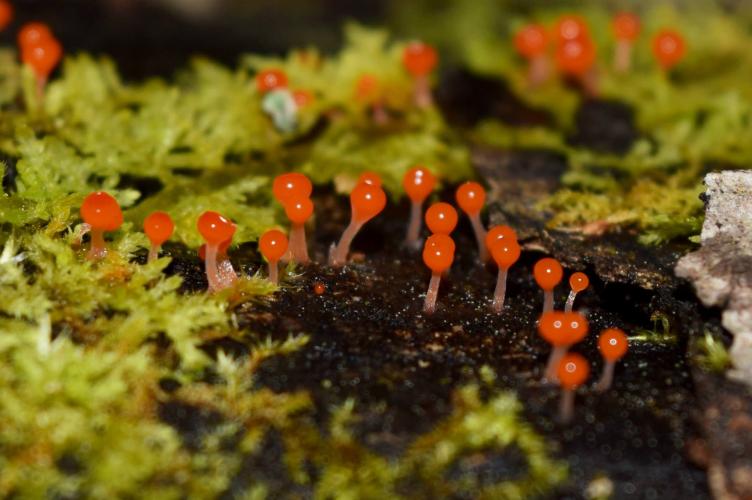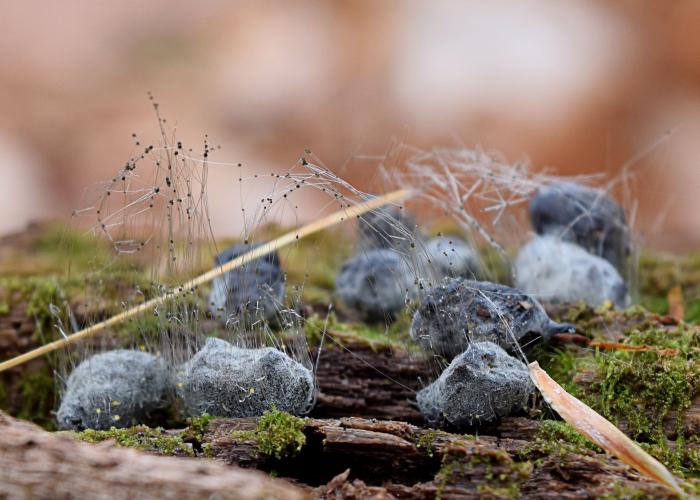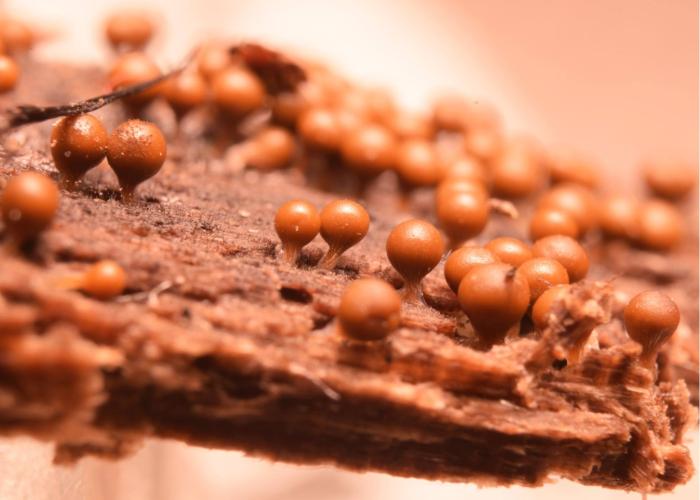Land Steward's Hobby Reveals Miniature Worlds on the Forest Floor
- Tags:
- Land Stewards

Michelle Hansen became a volunteer land steward for the Porter-Rogerson Forest in Tamworth, where she lives, last spring. Around the same time, her obsession with tiny worlds hidden on the forest floor began. It started when the snow was beginning to melt and leave some bare patches in the forest. “I noticed some lichens first,” Michelle said, “those tiny green ones with bright red tops that are called “British soldiers”… I got down close to take some photographs, and it just sort of grew from there.”

Her obsession grew, that is. The elfin worlds captured Michelle’s imagination, and her camera began capturing images of lichens, mosses, liverworts, slime molds, and all the miniature organisms growing on rocks and rotting logs. Michelle’s images are beautiful - and bizarre: glassy lollipops in bright red and yellow, fuzzy brush-like structures, and even sticky looking globules that seem to be erupting a primordial ooze. It’s a version of New Hampshire’s forests that most people don’t see, but only because they’re not looking. Browsing through Michelle’s photos, it’s easy to imagine being an ant or a pill-bug, or even a tiny imaginary fairy, navigating through these other-worldly landscapes.

“I just use a very basic setup to take the photos,” says Michelle. “I like telling people about it because many assume you have to have really expensive equipment, but that’s just not the case.” Her equipment includes a basic digital SLR camera with an inexpensive lens extension that fits between the camera body and the lens to provide her with additional magnification. Basically, you don’t have to be wealthy, but you do have to be patient and very observant to take photos like these. “When I’m hiking,” says Michelle, “I stop at every single rotting tree. It kind of drives my partner Keith crazy. But you have to take the time to really look for these organisms. Sometimes I’ll look all along a dead tree one way and see nothing, but then on the second pass I’ll find six cool little slime molds.”


Slime molds are arguably Michelle’s favorite micro-subjects. These curious organisms are not found in the animal, plant, or fungi kingdoms- they’re classified as protists (Kingdom Protista) along with many other single-celled organisms and some multi-celled ones like algae that don’t fit neatly into any other kingdom. Slime molds can live independently as single cells, but the cells can also aggregate to form reproductive “fruiting bodies” when food gets scarce and they need to disperse spores to new areas. It’s these fruiting bodies that you’ll often find Michelle photographing. When asked how she identifies individual slime mold species, Michelle is quick to point out that there is no guidebook for slime molds. She uses a variety of online resources and discussion boards, which have put her in touch with some experts who can help confirm identifications. “I did see a Kickstarter campaign for a slime mold field guide once,” she says, “but I guess it wasn’t that popular with funders.” That’s too bad. Maybe if the next appeal is accompanied by some of Michelle Hansen’s cool images of slime molds, it just might attract more attention.

